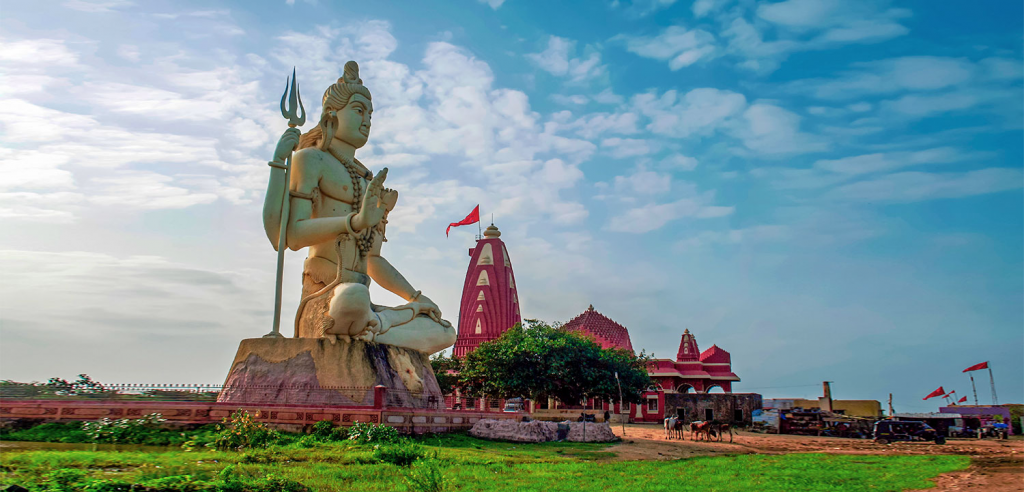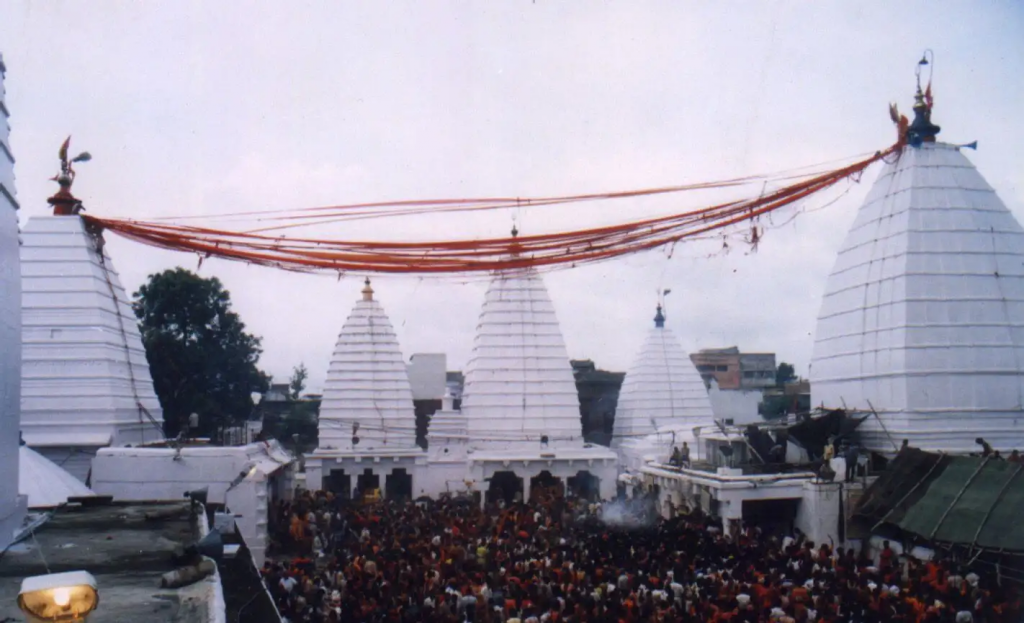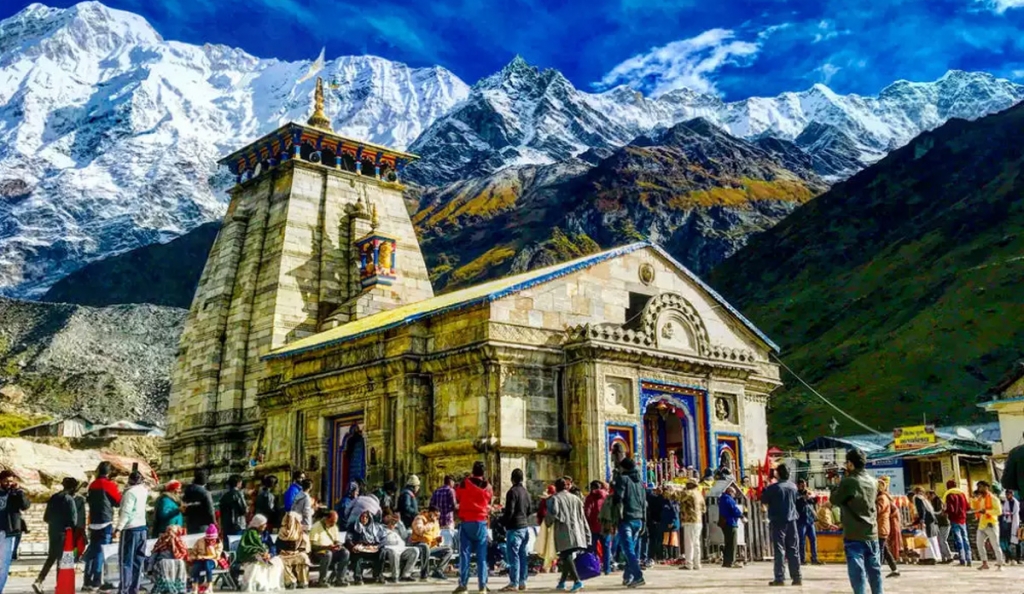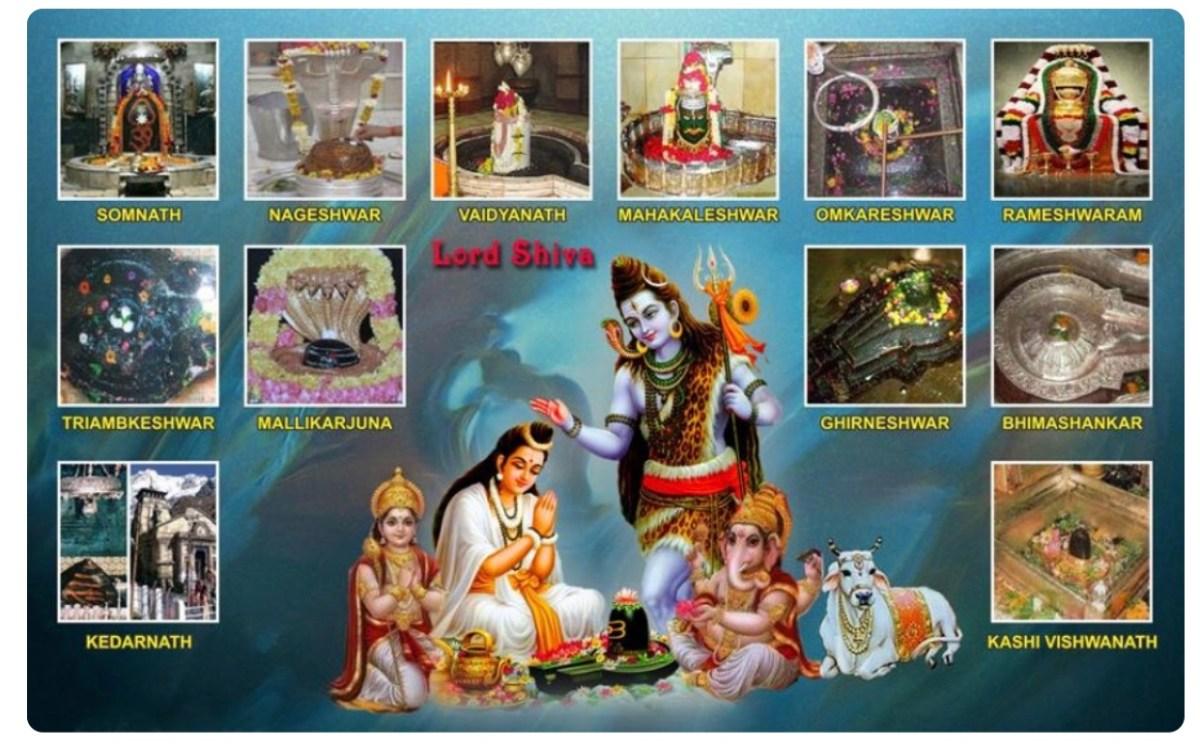Contents
- 1 1. Somnath – Gir Somnath In Gujarat
- 2 2. Nageshwar – Daarukavanam In Gujarat
- 3 3. Bhimashankar – Pune In Maharashtra
- 4 4. Trimbakeshwar – Nashik In Maharashtra
- 5 5. Grishneshwar – Aurangabad In Maharashtra
- 6 6. Vaidyanath – Deoghar In Jharkhand
- 7 7. Mahakaleshwar – Ujjain In Madhya Pradesh
- 8 8. Omkareshwar – Khandwa In Madhya Pradesh
- 9 9. Kashi Vishwanath – Varanasi In Uttar Pradesh
- 10 10. Kedarnath – Kedarnath In Uttarakhand
- 11 11. Rameshwaram – Rameswaram Island In Tamil Nadu
- 12 12. Mallikarjuna – Srisailam In Andhra Pradesh
- 13 FAQs
“Naa aadi naa ant uska, wo sabka naa inka naa unka, wahi shunya hai wahi aekaay, jiske bheetar basaa Shivaay”.
The word ‘Jyoti’ means light and ‘linga’ means sign. Jyotirlinga is the light of Lord Shiva. A Jyotirlinga is a holy representation of Lord Shiva. There are 12 Jyotirlingas in India.
The primary image of all these lingas is the “lingam” representing the beginning and end stambh pillar or the infinite nature of Lord Shiva.
Legend:
The Legend of the “Jyotirlinga” is mentioned in the Vishnu Purana. When Lord Vishu and Lord Shiva were debating over who is supreme, Lord Shiva had produced a vast pillar of light and asked both of them to find the end of the light in both directions. To which, Lord Brahma lied that he found the end, but Lord Vishnu accepted defeat. Lord Shiva then cursed Lord Brahma that even though he is the creator of the Universe, he won’t be worshipped. And the Jyotirlingas here are believed to have appeared from that infinite pillar of light produced by Lord Shiva.
Originally there were 64 Jyotirlingas out of which 12 are considered to be highly auspicious and holy. The 12 Jyotirlinga temples in India take the name of the presiding deity.
1. Somnath – Gir Somnath In Gujarat

The Gir Somnath is one of the most sacred pilgrimage sites for Hindus and is believed to be the first among the twelve jyotirlinga shrines of Shiva. Somnath temple is located on the western coast of Gujarat. The temple holds much importance in the hearts of Lord Shiva devotees as it is believed to house one of the 12 Jyotirlinga in India, holy shrines which are considered to be where Lord Shiva manifested.
2. Nageshwar – Daarukavanam In Gujarat

Nageshvara is one of the legendary temples mentioned in the Shiva Purana and is one of the twelve Jyotirlingas. It is located in Dwarka, Gujarat, India. This temple symbolizes the confiscation of evil forces from earth. It is one of the 12 Jyotirlingas, this temple abodes an interesting legend about its origin.
3. Bhimashankar – Pune In Maharashtra

The Bhimashankar Temple is located in the Sahyadri region of Pune. It is located in Bhorgiri village, near Pune. In recent times, it has gained a lot of significance as it was also declared the Bhimashankar Wildlife Sanctuary. River Bhima originates from Bhimashankar. The river is considered sacred because it is believed that the river is actually the perspiration of Lord Shiva after he defeated the demon Tripurasura. A holy dip in the river is believed to relieve one of their sins.
4. Trimbakeshwar – Nashik In Maharashtra

The Trimbakeshwar Temple is located about 30kms from Nasik in Maharashtra near the mountain named Brahmagiri from the river Godavari flows. This temple is considered to be a source of the river Godavari which is known as “Gautami Ganga”. The most unique feature of this temple is that the Shiva Linga here has three faces of the three almighty Gods of Hindu mythology – Brahma, Vishnu, and Maheshwara.
5. Grishneshwar – Aurangabad In Maharashtra

The Ghrishneshwar Jyotirlinga is located in a village called Verul, which lies 20 km from Daulatabad, near Aurangabad in Maharashtra. This temple was built by Ahilyabai Holkar who also rebuilt the Kashi Vishwanath Temple in Varanasi. The Ghrishneshwar temple is also known by other names like Kusumeswarar, Ghushmeswara, Grushmeswara and Grishneswara.
6. Vaidyanath – Deoghar In Jharkhand

Vaidyanath or Baidyanath or Vaijinath is also one among the 52 shakti pethas shrines of Sati of the Hindu religion. Vaidyanatha Jyotirlinga temple, also known as Baba Baidyanath Dham and Baidyanath Dham is one of the twelve Jyotirlingas, the most sacred abodes of Shiva. Vaidyanath is located at Deogarh in the Santal Parganas region of Jharkhand.
7. Mahakaleshwar – Ujjain In Madhya Pradesh

Shri Mahakaleshwar of Ujjayini is known among the twelve celebrated Jyotirlingas in India. One of the 12 Jyotirlingas in India, the lingam at the Mahakal is believed to be swayambhu (born of itself), deriving currents of power (Shakti) from within itself as against the other images and lingams which are ritually established and invested with mantra-shakti.
8. Omkareshwar – Khandwa In Madhya Pradesh

Omkareshwar temple in Mandhata is located on a pranva shaped (shape like “ॐ”) island at Narmada. Mamaleshwar (ancient name Amareshwar) temple is located on the south coast. Both the temples are described as having equal status. Both of these Shivlingas are considered as Jyotirlingas.
9. Kashi Vishwanath – Varanasi In Uttar Pradesh

Kashi Vishwanath Temple is one of the most famous temples in Varanasi, also known as the Golden temple dedicated to Lord Shiva. Kashi is the old name for the city of Benaras, now called Varanasi. The Hindu temple of Kashi Vishwanath has been the centre of Shaiva philosophy since time immemorial. The present structure of the temple is the one built by Ahilya Bai Holkar.
10. Kedarnath – Kedarnath In Uttarakhand

Shri Kedarnath is the eleventh Jyotirlinga, out of the twelve Jyotirlinga of India was established by Aadi Guru Shankaracharya. Dedicated to Lord Shiva, the ancient temple has exquisite architecture and is built of extremely large but evenly shaped grey stone slabs. A conical rock formation inside the temple is worshipped as Lord Shiva in his “Sadashiva” form.
The town, built around the revered Kedarnath temple, is located at an altitude of 3,580 m, near Chorabari glacier, which is the source of the Mandakini river.
11. Rameshwaram – Rameswaram Island In Tamil Nadu

Ramanathaswamy Temple is a Hindu temple dedicated to the god Shiva located on Rameswaram island in the state of Tamil Nadu, India. It is also one of the twelve Jyotirlinga temples. It is believed that Lord Rama worshipped Lord Shiva here and this led him to victory in the historic battle of the Ramayana. The temple in its current structure was built during the 12th century by Pandya Dynasty.
12. Mallikarjuna – Srisailam In Andhra Pradesh

The Bhramaramba Mallikarjuna Temple, more commonly known as Srisailam Temple and is located in the Kurnool district of Andhra Pradesh. There are two separate temple complexes present inside – one is dedicated to Lord Mallikarjuna and the other one to Goddess Bhramarambha. The Linga of the presiding deity Lord Mallikarjuna Swamy is one of the twelve Jyotirlingas of Lord Shiva. The sanctity of the hill is mentioned in Mahabharatha, Skanda Purana and many other religious scriptures.
Mallikarjuna is one among the 52 Shakti Peethas.
FAQs
Somnath Jyotirlinga in Gir, Gujarat
Mallikarjuna Jyotirlinga in Srisailam, Andhra Pradesh
Mahakaleshwar Jyotirlinga in Ujjain, Madhya Pradesh
Omkareshwar Jyotirlinga in Khandwa, Madhya Pradesh
Baidyanath Jyotirlinga in Deoghar, Jharkhand
Bhimashankar Jyotirlinga in Maharashtra
Ramanathaswamy Jyotirlinga in Rameshwaram, Tamil Nadu
Nageshwar Jyotirlinga in Dwarka, Gujarat
Kashi Vishwanath Jyotirlinga in Varanasi, Uttar Pradesh
Trimbakeshwar Jyotirlinga in Nasik, Maharashtra
Kedarnath Jyotirlinga in Rudraprayag, Uttarakhand
Ghrishneshwar Jyotirlinga in Aurangabad, Maharashtra
There are 12 Jyotirlinga in India.
The Jyotirlingas are believed to be self-manifested forms of Lord Shiva, representing his infinite cosmic energy. They hold immense spiritual and religious significance for devotees, who believe that visiting these shrines and offering prayers can help attain salvation and liberation from the cycle of birth and death.
Yes, the Jyotirlingas are open to all visitors irrespective of their caste, creed, or gender. Devotees from all over the world, including foreigners, are welcome to visit these sacred shrines and seek blessings.
Each Jyotirlinga has its own set of rituals and practices that are followed by devotees. These typically involve bathing the lingam (symbolic representation of Lord Shiva) with holy water, offering flowers, fruits, and other items, and chanting prayers and hymns dedicated to Lord Shiva. Pilgrims often undertake a circumambulation (pradakshina) around the sanctum sanctorum as a mark of reverence.

